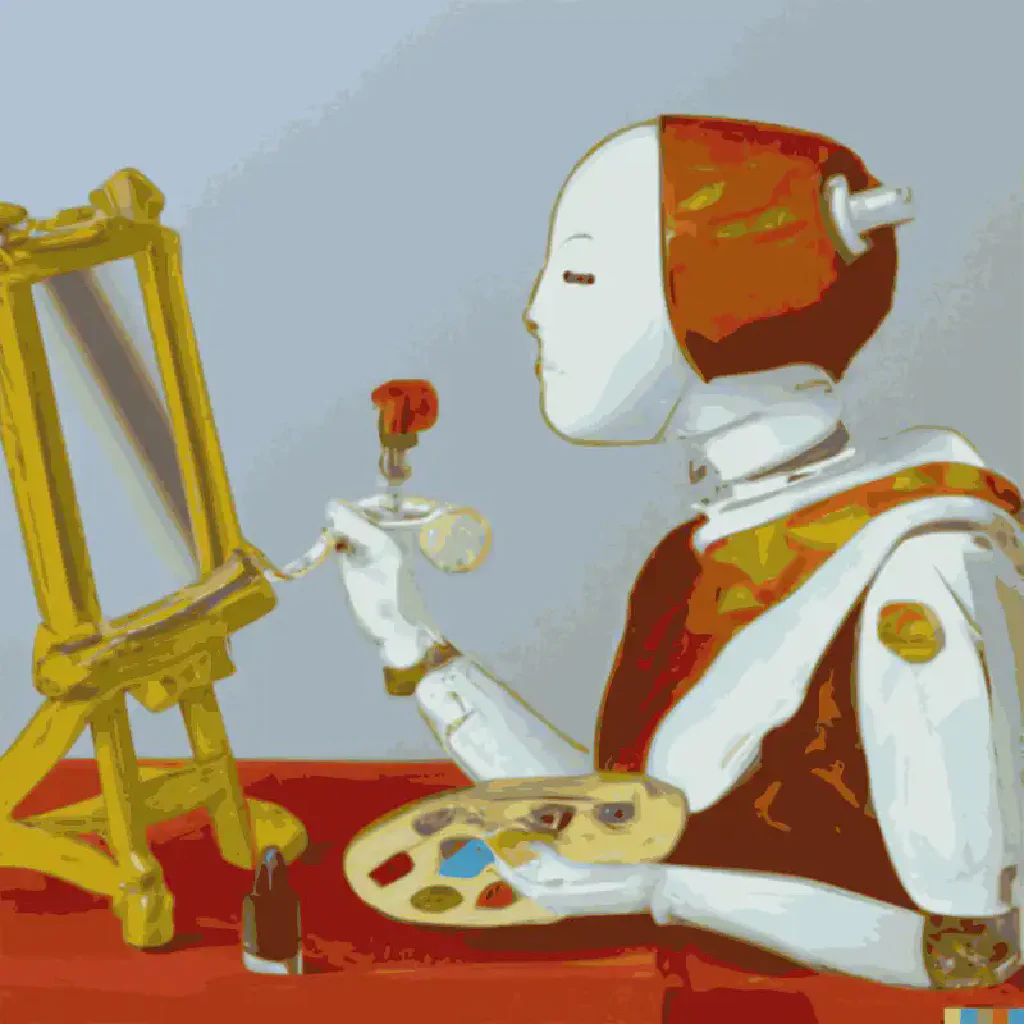AI and Art

AI acts like a super-smart computer that can perform tasks we typically associate with humans. AI tools can learn from existing art and then use this knowledge to make new art. Once an AI tool is trained in what different art styles, techniques, and themes look like, it can create its own unique works based on a prompt from the user.
Before AI can begin generating art, it goes through a learning process. The first step in this process is when it is given a set of training data. This data includes a wide range of art, from ancient paintings to modern digital creations. The AI must pay close attention to things like colors, shapes, and patterns, much like how artists learn from different styles to improve their own work.
Once the AI has absorbed this information, it enters the learning phase. This is where it uses advanced algorithms to find similarities in the art it has seen. It attempts to learn what different elements can look like, what makes art visually pleasing, and how different artistic elements come together. For example, it might notice that nature scenes often include a sky or leaves on a tree or that certain colors or shapes are common in paintings of fruit.
The AI learning process depends on something called a neural network, which is patterned after the neural networks in human brains. The neural network helps the AI to connect different ideas and more accurately identify elements like colors, brushwork techniques, and shapes. It assigns importance levels, or weights, to different elements based on how frequently they appear in the art it has studied. These weights help the AI decide what’s important when creating new art.
Once it has completed its learning phase, the AI is ready to create art. It uses a unique kind of neural network called a generative adversarial network (GAN). This network consists of two parts: one that generates art and another that evaluates the output. These two parts work together to continually improve the art until it reaches a high quality.
But AI doesn’t make art on its own. To create art, it needs a human to feed it a prompt, a set of instructions for the art it should make. Artists might also collaborate with AI on their own projects. Some artists use AI to spark new ideas, enhance their existing work, or even work side by side with the computer to create art together. AI can offer fresh perspectives and innovative approaches to help an artist make something that breaks the mold.
AI is making art accessible to everyone, including those who might not have had the chance to experience the joy of creating it previously. Through user-friendly apps and programs, AI acts as a creative companion, simplifying the artistic process for those who struggle to turn the ideas in their head into something that others can experience and enjoy. This fusion of human creativity with AI intelligence is redefining art, empowering individuals to explore their artistic potential.
AI has also helped professional artists to explore their craft in new ways. Imagine strolling through an art gallery where the artwork transforms as you move or even adapts to your emotions. AI could be used to develop virtual reality pieces that immerse you in alternate worlds. It can even create films and musical compositions that look at the world in entirely new ways.
AI has also begun to play a critical role in preserving and restoring art. Advanced algorithms can meticulously analyze artworks for signs of damage, decay, or forgery. This assistance aids art conservators and historians in safeguarding the legacy of historical artworks for future generations.
For those intrigued by the connection between technology and art, the following resources offer a deeper dive into the diverse world of AI in art:
- What Is AI Art?
- How Did AI Art Evolve?
- Generations of Generative Art
- Why Love Generative Art?
- Artists Collaborating with AI
- Is AI Set to Become Art’s Next Medium?
- Ethical Considerations in AI Art
- AI Art Ideas for Kids
- User-Friendly AI Art Tools for Designers
- How AI Is Restoring Famous Paintings
- Top AI Art Generators
- Getting Started With AI Art
- How to Write AI Art Prompts
- How to Manage Your AI Prompts
- How to Use DALL-E 2 to Create AI Art
- How to Get the Most Out of Generative AI
- A Beginner’s Guide to Midjourney